- California Assembly OKs highest minimum wage in nation
- S. Korea unveils first graphic cigarette warnings
- US joins with South Korea, Japan in bid to deter North Korea
- LPGA golfer Chun In-gee finally back in action
- S. Korea won’t be top seed in final World Cup qualification round
- US men’s soccer misses 2nd straight Olympics
- US back on track in qualifying with 4-0 win over Guatemala
- High-intensity workout injuries spawn cottage industry
- CDC expands range of Zika mosquitoes into parts of Northeast
- Who knew? ‘The Walking Dead’ is helping families connect
Heavy rain pummels central S. Korea; casualties reported in landslides National 20:01 August 03, 2020
Heavy rain continued to pound South Korea’s central regions and the greater Seoul area Monday, flooding houses and roads, and prompting authorities to close riverside and mountainous areas.
More than 100 millimeters of rain per hour soaked Chuncheon in mountainous Gangwon Province and heavy rain of 80 mm hit parts of Gyeonggi Province, which surrounds Seoul.
Heavy rain advisories had been issued for the greater Seoul area, as well as Sejong, North and South Chungcheong Provinces and Gangwon and North Gyeongsang Provinces as of 2 p.m. Up to 90 mm of rain continued to fall in northern areas of Chungcheong.
In Pyeongtaek, south of Seoul, a landslide swept over a temporary building in a semiconductor parts factory, killing three workers in their 30s and injuring one in his 50s. Two other workers managed to escape.
The workers were reportedly working in a makeshift building made of panels. Fire authorities said it took them nearly one hour to locate the victims as soil piled up several meters high.



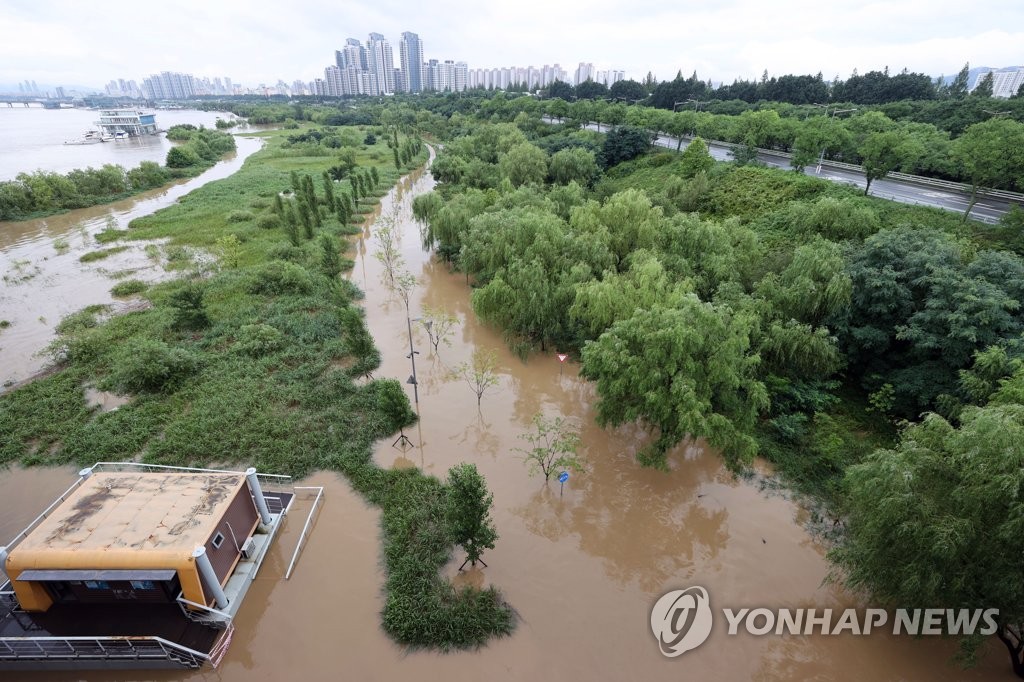
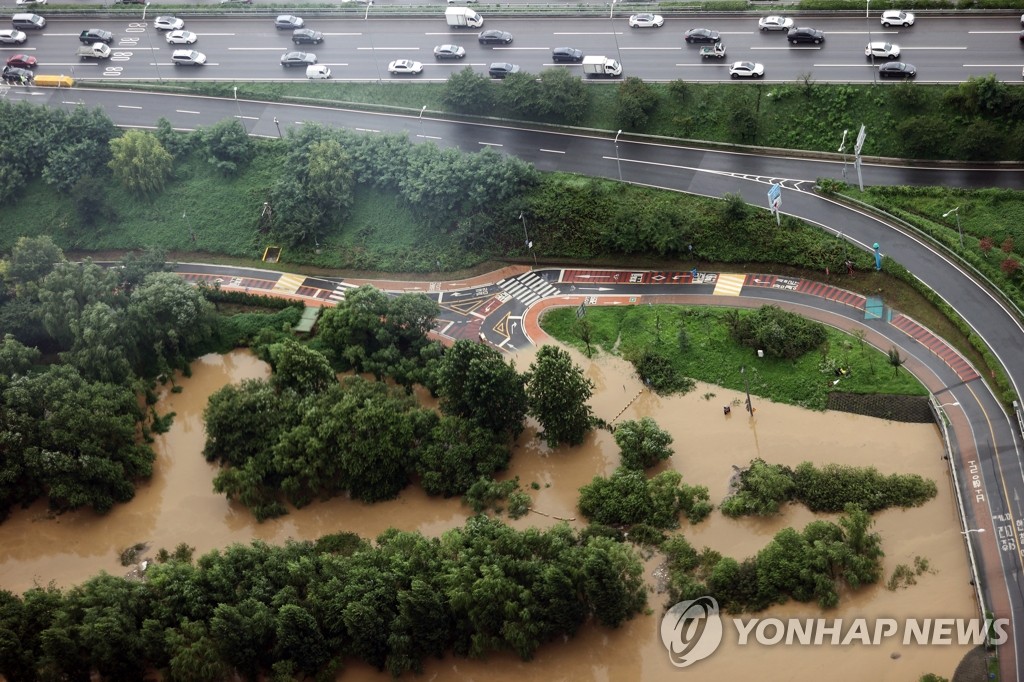
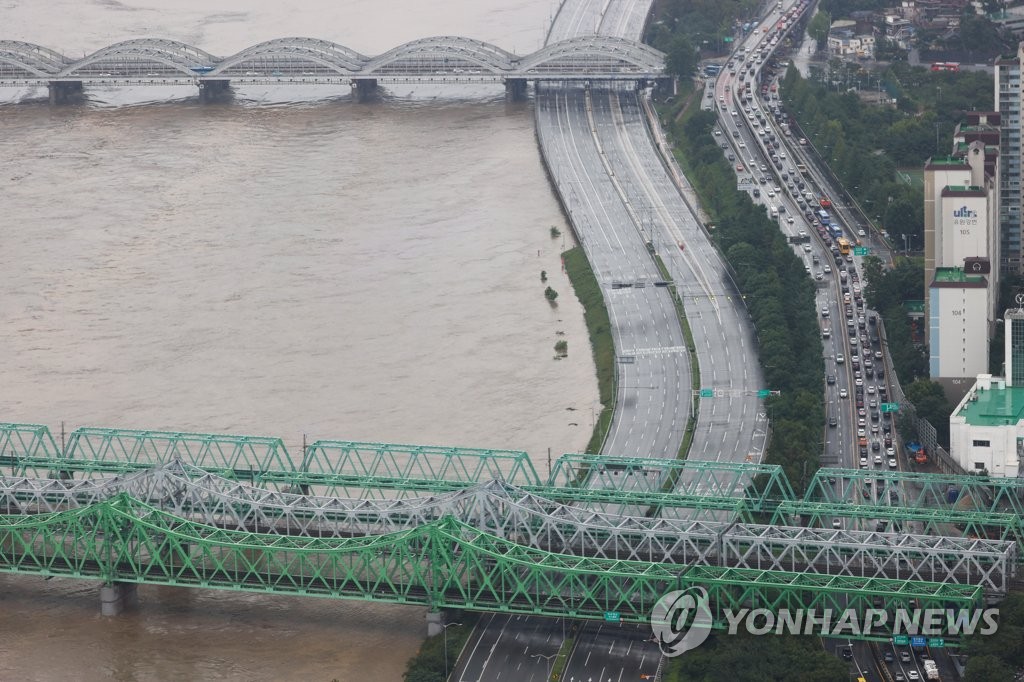
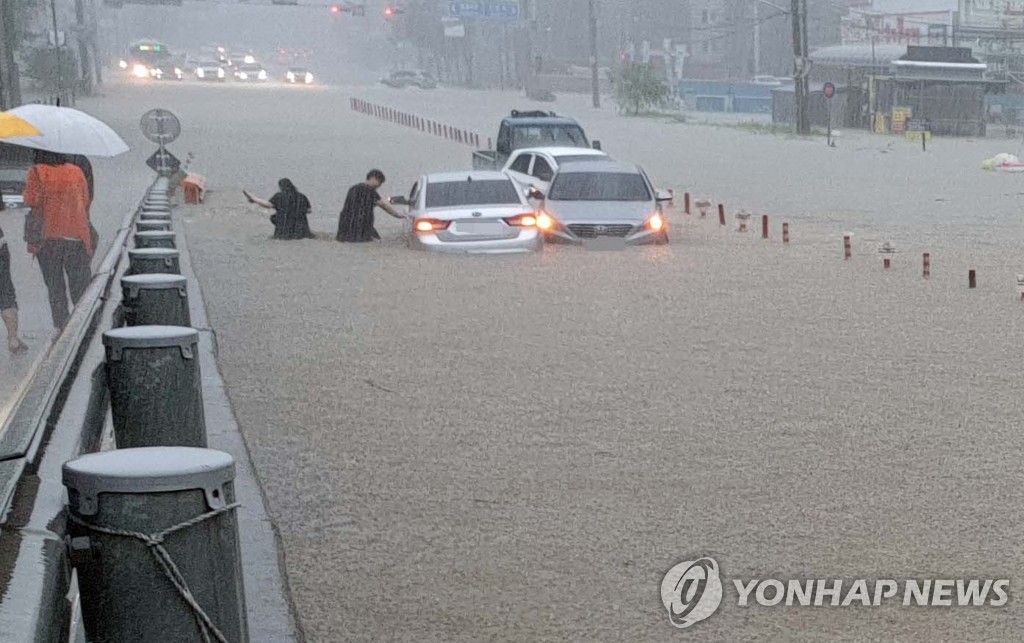
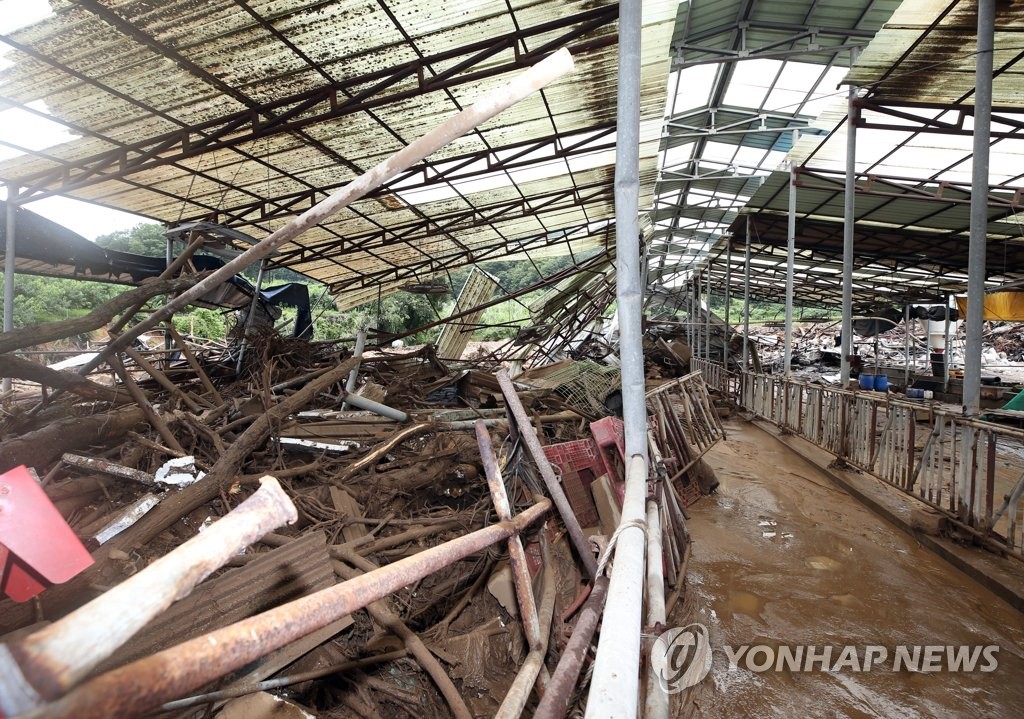

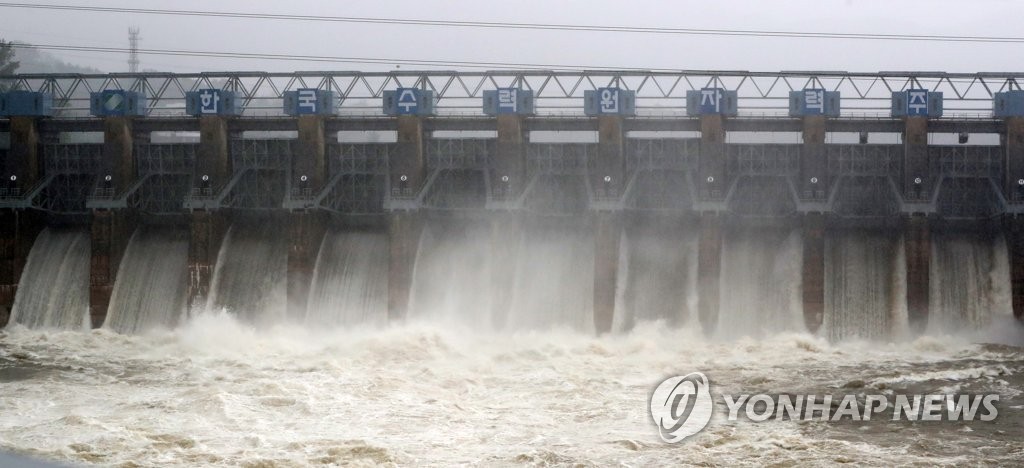
This photo shows a semiconductor parts factory in Pyeongtaek, Gyeonggi Province, where three workers died and one was seriously injured due to a mudslide triggered by torrential rain on Aug. 3, 2020. (Yonhap)
In Gapyeong, also in Gyeonggi Province, the gas and water supply was temporarily suspended to restore pipes that have been exposed due to heavy rain.
A family of three, including a child of two, who went missing after their home in the Gyeonggi county was engulfed in a mudslide, were found dead at the site. Some 40 emergency rescue personnel and heavy construction equipment were sent to the house, with a search operation still underway for another person who may have been in the house when it was destroyed.
Local authorities said a person was swept up in a mountain stream in Gapyeong, while another went missing in nearby Pocheon County.
The rain was estimated to have damaged 112 houses and 2,330 hectares of land in the province and nearby regions. Seventy landslides were reported. Over 910 people have been displaced from their homes due to flooding and landslides.
In Seoul, a hole measuring 2 meters in width and 1.5 meters in depth appeared at a road in the southern area of Gangnam. Authorities are restoring the road. No casualties were reported.
Elsewhere in Seoul, authorities helped pump out water from flooded houses and remove trees that had been toppled by the heavy rain.
Entry to most of the 11 parks along the Han River has been banned as water levels spiked and swamped the areas. Entrance to streams and mountains are also being restricted to prevent accidents.
Parts of Olympic Expressway, a key highway that connects southern Seoul with Gyeonggi Province, was also closed as water levels quickly rose earlier in the day, although cars were allowed to pass later in the afternoon.
Similar damage was reported in the city of Incheon and the provinces of North Jeolla and South Chungcheong.
Areas in Cheonan, South Chungcheong Province, were swamped as 50-80 mm of rain hit the area. Rain swelled up to knee-level in a traditional market and covered car rooftops on some roads.
Meanwhile, most train services that had been suspended due to mudslides resumed earlier Monday. However, trains connecting Chungju and Jecheon, both in North Chungcheong Province, and Youngju and Donghae in the eastern region remained disrupted. The Taebaek line also remained suspended.
A section of an busy intersection on Gyeongbu Expressway near Singal remained closed due mudslide.
The central disaster agency said that six have died and 13 went missing due to the heavy rain on Monday alone. Counting fatalities reported over the weekend, the death toll for the past three days reached 12. Besides hundreds of homes being evacuated, authorities said 872 public facilities have been damaged by heavy rain.
President Moon Jae-in has called off his scheduled summer holiday amid growing damage from torrential rain, according to the presidential office Cheong Wa Dae.
Moon was briefed on the extent of damage caused by heavy rain nationwide and expressed concerns over people’s safety, presidential deputy spokesperson Yoon Jae-kwan said in a briefing.








![일본 사도광산 [서경덕 교수 제공. 재판매 및 DB 금지]](http://www.koreatimesus.com/wp-content/uploads/2024/07/PYH2024072610800050400_P4-copy-120x134.jpg)


